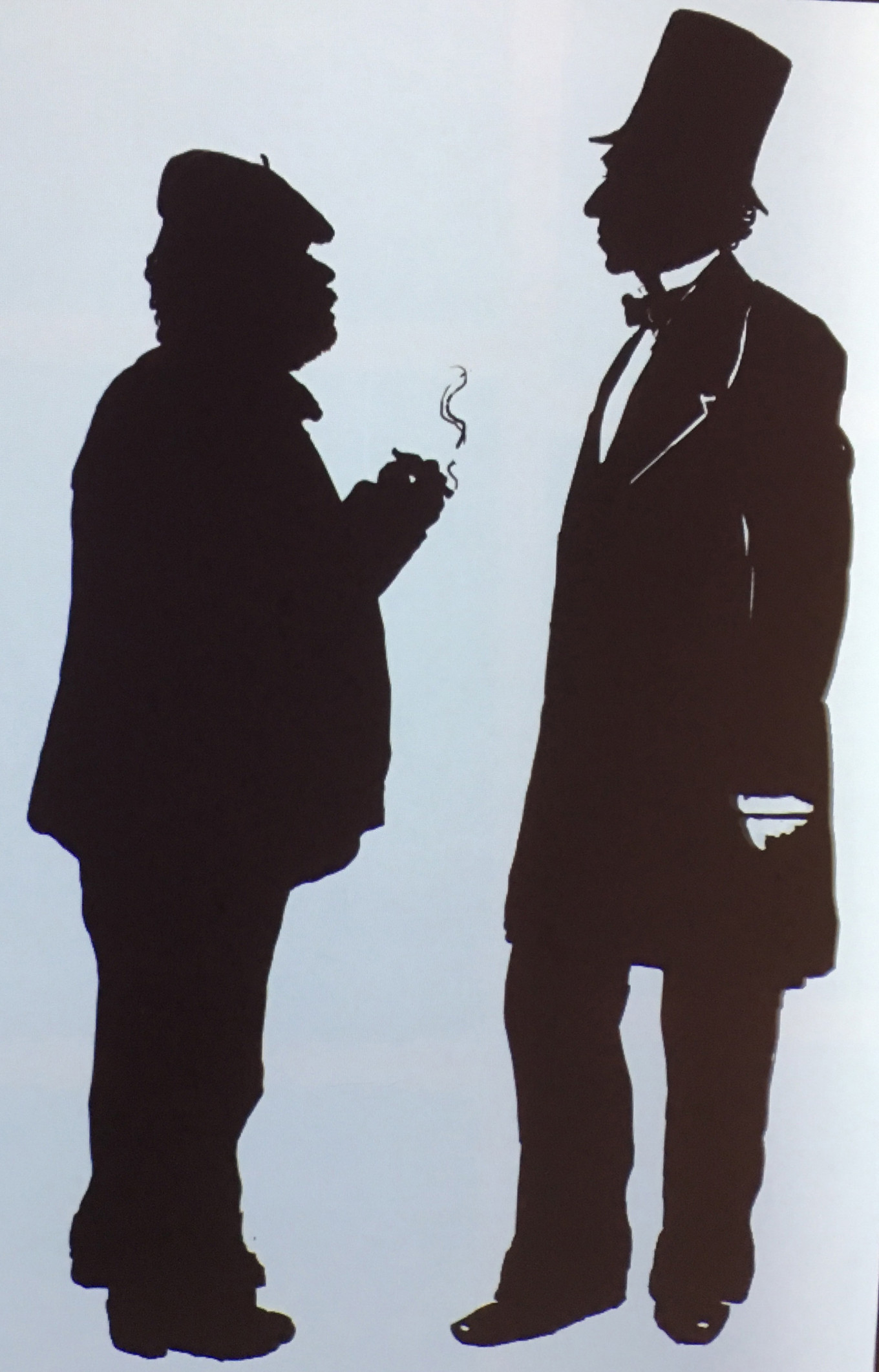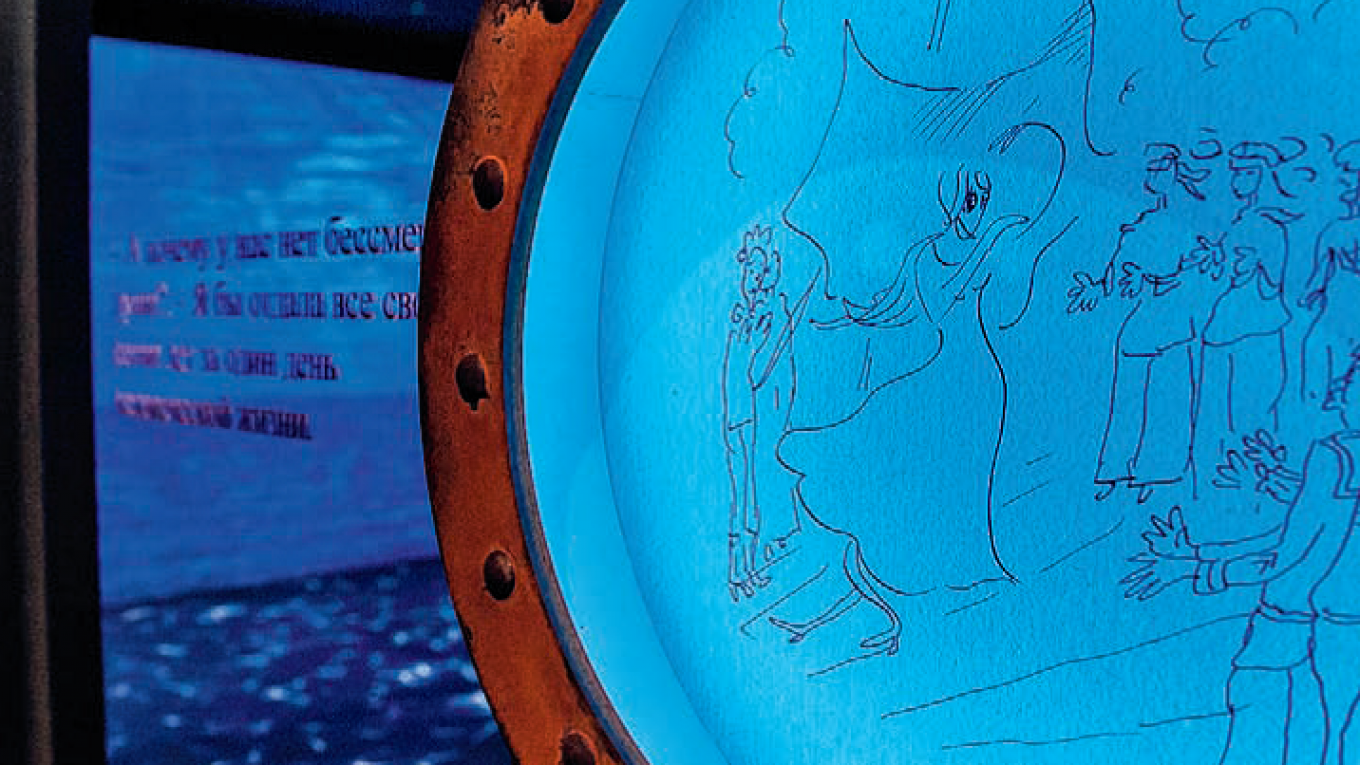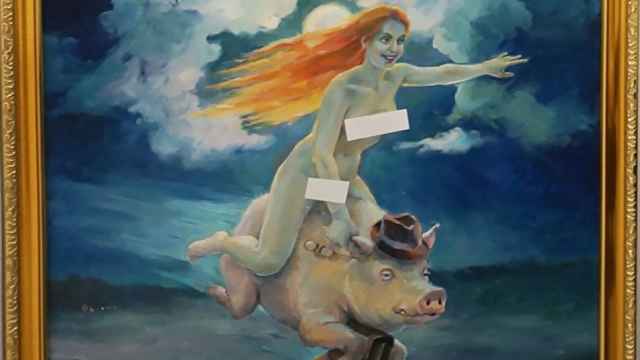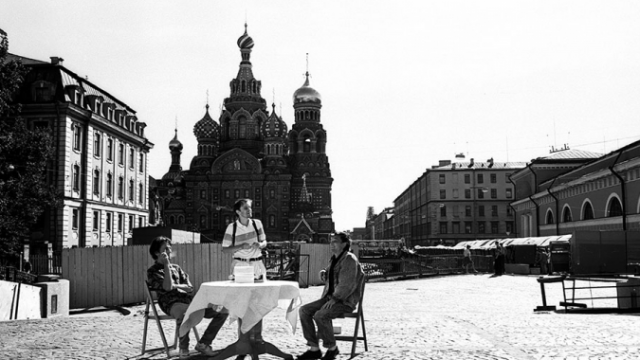What do a tall, lanky, quiet and rather ascetic 19th century Danish writer of fairy tales and a short, pudgy, expansive 20th century Russian artist have in common? Find out at the AZ (Anatoly Zverev) Museum, where a show of Zverev’s illustrations to fairy tales written by Hans Christian Andersen has been extended for another month.

An Odd Couple
At first glance, Andersen and Zverev do not seem to be a natural team of writer and illustrator. Hans Christian Andersen, born in 1805 and died in 1875, wrote a fairy tales — both traditional stories he remembered from his childhood and his own creations. They are not all cheery folk tales that end with happily ever after. Some, like “The Emperor’s New Clothes,” “The Little Mermaid,” or “The Swineherd,” with their complex themes and sad endings, do not seem like tales for children at all.
Anatoly Zverev was born more than a century later in 1931 in Moscow. After studying art in grade school and graduating from a vocational school, he began to paint fences at Sokolniki Park to help support his family. He was full of life and animated, the emotional opposite of Andersen. Celebrated abroad for his brilliant graphics and paintings, in the Soviet Union he was an unofficial, non-conformist painter who only had one sanctioned exhibition in Moscow during his lifetime. He died in 1986.
Whatever their differences, the two men were alike in one way: both were extraordinarily prolific. Andersen wrote over 200 fairy tales and stories, and dozens of other works. Zverev left thousands of sketches, drawings, portraits and paintings.
Several years ago Natalya Volkova, the chief archivist of the museum, was working on a book about Anatoly Zverev and decided to check the archive of Alexander Rumnev, the choreographer, ballet master, actor and performer who was one of Zverev’s friends and patrons. Inside a box she found a file filled with Zverev’s illustrations. “There was also a letter Rumnev sent to Zverev, who had been living in a village. He told him to come back to Moscow and that he’d try to get him work as an illustrator,” she said in an interview to The Moscow Times. “This was 1961, when there were editions of Hans Christian Andersen being prepared. Two months later Zverev did the drawings.” They apparently were never even offered to publishing companies, because, as Volkova noted, “They were not at all appropriate stylistically for that time period.”
Happily, times have changed, and the five fairy tales by Andersen with Zverev’s illustrations were quickly published. But the curators of the museum wanted to present the illustrations in a different way. “We were so interested in how time changes perception, how differently Zverev saw these fairy tales than other illustrators, both Russian and foreign,” Polina Lobachevskaya, director of the AZ Museum told The Moscow Times. “For one thing, other artists worked in color, but his illustrations were in black and white. We wanted to create a special atmosphere in the museum to showcase their charm, with film, animation, music and other means that would provide more information to the viewers,” she said.
Zverev’s Andersen
And so they did. When you enter the small manor house off Tverskaya Ulitsa that is home to the AZ Museum, you are plunged into a different world — quite literally on the first floor, where lighting creates the effect of being on the bottom of the sea. Zverev’s drawings of “The Little Mermaid” are in ship portholes set around the room. On the second and third floors there are mechanical birds and wings, bird song and animated films, music and installations. The illustrations to four fairy tales have been enlarged and properly lit to be more easily seen, and are displayed next to excerpts of texts. Four of Zverev’s small and fragile original drawings have been lent to the show by the Russian State Archive of Literature and Art and can be seen in glass cubes on each floor.
Even if you reread the fairy tales before your visit — “The Little Mermaid,” “The Nightingale,” “The Wild Swans” and “The Emperor’s New Clothes” — you might find it a bit difficult to follow the stories through Zverev’s illustrations alone. His sympathies and antipathies were those of a man living in the 20th century Soviet Union, a place where bureaucrats and citizens, including children, curried favor with the leaders through flattery, lies, and denunciations. Zverev is generally not kind to Andersen’s court chamberlains or public crowds. In “The Emperor’s New Clothes,” the little boy is usually the hero of the tale: the brave soul unafraid to speak the truth to power. But in Zverev’s illustration, the little boy is just a squiggle at the back of the crowd with his hand raised in accusation. Zverev seems to sympathize with the emperor, portraying him as a jolly fellow enjoying his fantasy of magnificent clothing.
To Andersen’s Homeland
Zverev’s illustrations to Andersen’s tales are just some of the hundreds of illustrations done for translations of the tales all over the world, and one suspects that Danes are used to the unexpected ways that artists in other cultures perceive and present their national tales. But all the same, the Ambassador of Denmark in Russia, found the drawings and installation “unique.” He told The Moscow Times that, “…the extraordinary drawings by Anatoly Zverev, the modern Russian interpretations of selected works of Andersen and the way it all was put together by the AZ Museum made the exhibition truly remarkable and special.” After the show closes in Moscow at the beginning of April, it will travel to Denmark, where Andersen’s modern compatriots will see his tales anew.
The show has been extended until the beginning of April. See museum-az.com for evening events of lectures and music.
A Message from The Moscow Times:
Dear readers,
We are facing unprecedented challenges. Russia's Prosecutor General's Office has designated The Moscow Times as an "undesirable" organization, criminalizing our work and putting our staff at risk of prosecution. This follows our earlier unjust labeling as a "foreign agent."
These actions are direct attempts to silence independent journalism in Russia. The authorities claim our work "discredits the decisions of the Russian leadership." We see things differently: we strive to provide accurate, unbiased reporting on Russia.
We, the journalists of The Moscow Times, refuse to be silenced. But to continue our work, we need your help.
Your support, no matter how small, makes a world of difference. If you can, please support us monthly starting from just $2. It's quick to set up, and every contribution makes a significant impact.
By supporting The Moscow Times, you're defending open, independent journalism in the face of repression. Thank you for standing with us.
Remind me later.







